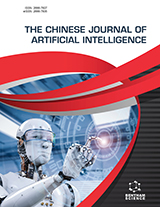Book Volume 3
Preface
Page: ii-vi (5)
Author: Vinod Kumar, Mandeep Mittal and Adesh Kumari
DOI: 10.2174/9789815196320124030002
PDF Price: $15
Cost Optimisation Analysis for a Markovian Feedback Queueing System with Discouragement, Breakdown, and Threshold-based Recovery Policy
Page: 1-17 (17)
Author: Amit Kumar, Amina Angelika Bouchentouf and Mohamed Boualem*
DOI: 10.2174/9789815196320124030004
PDF Price: $15
Abstract
In this investigation, we deal with a finite capacity Markovian feedback queue with
threshold-based recovery policy, server breakdown, and customers’ impatience. For this
system, the Successive Over-Relaxation (SOR) method is used to obtain the steady-state
probabilities. Besides, the queueing system’s characteristics are also derived. Then, cost
optimization of the system is carried out using the Quasi-Newton method. Further, numerical
studies are performed to support the theoretically obtained results.
Solutions of Parametric Set-Valued Optimization Problems of Higher-Order
Page: 18-35 (18)
Author: Koushik Das* and Chandal Nahak
DOI: 10.2174/9789815196320124030005
PDF Price: $15
Abstract
We deal with a parametric set-valued optimization problem (in brief, PSOP), where
set-valued functions (in brief, SVFs) are used for the constraint and objective functions. We
use the idea of higher-order p-cone convexity of SVFs (introduced by Das and Nahak [1] as a
generalization of cone convex SVFs. We provide the Karush-Kuhn-Tucker (in brief, KKT)
criteria of sufficiency for the presence of the minimizers of the PSOPs under higher-order p-
cone convexity assumption. Further, we constitute the duality models of Mond-Weir kind and
demonstrate the strong, weak, and converse duality theorems under higher-order contingent
epi-derivative and higher-order p-cone convexity assumption to a couple of set-valued
optimization problems (in brief, SOPs). We provide some examples to justify our results. As a
special case, our results reduce to the existing ones of scalar-valued parametric optimization
problems
Development and Assessment of Data in Solarpowered System for Simultaneous Production of Power, Heating, and Cooling
Page: 36-47 (12)
Author: Mohd Parvez*, Taufique Ahamad and Osama Khan
DOI: 10.2174/9789815196320124030006
PDF Price: $15
Abstract
The primary objective of the study is to investigate the trigeneration system for the
simultaneous production of power, heating, and cooling, driven by solar power towers
employing molten salt as the heat transfer fluid. A comparative analysis is provided between
refrigerants (LiNO3-H2O and LiBr-H2O), so as to evaluate the best thermodynamic
performance for the vapor absorption refrigeration system among them. A novel concept of
uncertainty analysis is introduced which is a prime instance in this research area so as to provide
much better results with precision removing all human and machine errors stipulated to be 5.34
% which is to be found in the desired range. Combined energy and exergy analyses are
performed to investigate the variation in efficienices while altering various performance
parameters for the trigeneration system. The highest exergy destruction was found to be 33.6%
by the central receiver, 24.9% by heliostat, and 7.8% by heat recovery steam generators. The
highest energy and exergy efficiencies (62.6% and 20.6%) were obtained by LiBr-H2O,
whereas (60.9% and 19.6%) were obtained from LiNO3-H2O refrigerant.
A New Algorithm for Solving Fully Fuzzy Linear Programming Problems using the Lexicographic Method
Page: 48-61 (14)
Author: Anil Kumar Nishad*, Gunjan Agarwal, S. R. Singh and Gajraj Singh
DOI: 10.2174/9789815196320124030007
PDF Price: $15
Abstract
In the current situation, ranking a general fuzzy number is a difficult task, and various
ranking methods have been developed, but no perfect ranking method exists. To solve fully
fuzzy linear programming problems, many ranking functions have been developed and
implemented in the literature. However, all of these methods have some limitations. In this
chapter, we propose a new method for comparing two triangular fuzzy numbers in a generalised
form. The Ezzati method [1] has been expanded upon using the suggested approach to handle
fully fuzzy linear programming issues (FFLPP). The implementation of the developed
algorithm has been illustrated through numerical illustrations. The proposed algorithm has been
applied to a transportation problem in light of extensive testing, and it has been discovered that
it is effective and generally offers a better solution.
Anti-synchronization Between Different Nonlinear Chaotic Systems Via Active Nonlinear Control Method
Page: 62-74 (13)
Author: Sanjay Kumar and Ram Pravesh Prasad*
DOI: 10.2174/9789815196320124030008
PDF Price: $15
Abstract
This research article establishes anti-synchronization between the three-dimensional
non-identical nonlinear Chen-Lee, Lorenz-Stenflo and Liu-Chen chaotic systems via active
nonlinear control techniques. Phase portraits of master and slave systems in the form of antisynchronization are investigated. The stability results are discussed by the stability theory of
Lyapunov function. Anti-synchronization of chaotic Chen-Lee system and chaotic Lorenzstenflo systems as well as anti-synchronization of chaotic Chen-Lee and Liu-Chen systems have
been established using active control methodologies. The active control method is more
efficient to obtain the anti-synchronization between different chaotic systems. Numerical
results are also discussed by the proposed method.
Fixed Charged Nonlinear Solid Transportation Problem with Budget Constraints Using Bounded Parameters
Page: 75-91 (17)
Author: A. K. Bhurjee and P. Kumar*
DOI: 10.2174/9789815196320124030009
PDF Price: $15
Abstract
This chapter considers a fixed charged solid transportation problem where all
parameters of the problem have uncertainty due to ambiguity in the data set. These uncertain
parameters (destination budget, accessibility, necessity, conveyance capacity, and
transportation cost) are considered bounded. The problem’s solution is obtained by applying a
transformation of the interval-based model into a conventional nonlinear programming
problem. The transformed model is solved using any nonlinear programming technique. The
solution obtained by the deterministic model is an acceptable solution to the main model. An
examples with hypothetical data are explained to validate the developed model and
methodology.
Soft Computing Techniques for Cancer Classification of Gene Expression Microarray Data: A Three-Phase Hybrid Approach
Page: 92-113 (22)
Author: Amol Avinash Joshi* and Rabia Musheer Aziz
DOI: 10.2174/9789815196320124030010
PDF Price: $15
Abstract
Recently, many soft computing methods have been implemented to extract
information from big data. A standardized format for evaluating the expression levels of
thousands of genes is made available by DNA microarray technology. Cancers of several
anatomical regions can be identified with the help of patterns developed by gene expressions
in microarray technology. Since the microarray data is too huge to process due to the curse of
dimensionality problem.
Methodology: Therefore, in this chapter, a setup based on a hybrid machine learning
framework using soft computing techniques for feature selection is designed and executed to
eliminate unnecessary genes and identify important genes for the identification of cancer. In
the first stage, the genes or the features are taken out with the aid of the higher-order
Independent Component Analysis (ICA) technique. Then, a wrapper algorithm that is based on
Spider Monkey Optimization (SMO) with Genetic Algorithm (GA) is used to find the set of
genes that improve the classification accuracy of Naïve Bayes (NB) classifiers and Support
Vector Machine (SVM). For comparison purposes, three other optimization techniques
considered in this chapter are Particle Swarm Optimization (PSO), Artificial Bee Colony
(ABC), and Genetic Algorithm (GA). After the selection of relevant expressed genes, the most
popular classifiers namely Naïve Bayes (NB) and Support Vector Machine (SVM)) are trained
with selected genes, and in the end, the accuracy of classification is determined using test data.
Result: The experimental results with five benchmark microarray datasets of cancer prove that
Genetic Spider Monkey (GSM) is a more efficient approach to improve the classification
performance with ICA for both classifiers.
A Survey of Pairing Free Certificateless Signature Schemes for Secure Networking
Page: 114-131 (18)
Author: Deepika* and Pankaj Kumar
DOI: 10.2174/9789815196320124030011
PDF Price: $15
Abstract
Technology has enhanced the jeopardy of misuse of individual confidential data and
identity theft attacks, where securing the content of communication and confidentiality has
become one of the chief requirements. Here Cryptography operates as the cornerstone of
computer and communications security. Certificateless cryptography, together with digital
signatures, is the best solution for achieving fundamental security, i.e., confidentiality, data
integrity, non-repudiation, and authentication. Correspondingly, certificateless cryptography
(CLS) abolishes certificate management problems and the key escrow problems of public-key
cryptography (PKC) and identity-based cryptography (IBC). CLS is the optimum combination
of PKC and ID-based PKC, hence making it more efficient. Many signature schemes rely on
certificateless schemes (CLS) and are formed using bilinear pairing and the MTP hash
functions. An MTP (map-to-point) hash function and elliptic curve bilinear pairing are lavish
procedure schemes, and they enhance computation expenses in the schemes and are timeconsuming. In contrast, pairing-free CLS schemes rely on elliptic curve cryptography (ECC)
and have comparatively less computational cost, providing the desirable time requirement and
making the scheme more efficient. In this chapter, we have done a survey of various pairingfree CLS schemes and compared them with each other. We have analyzed the performance
evaluation of various schemes’ security and efficiency. Some are even observed to be
precarious under various attacks.
Analysis and Development of Tie-breaking Procedures Using Fuzzy Technique for Order Performance by Similarity to Ideal Solution
Page: 132-145 (14)
Author: Iftikhar Husain*
DOI: 10.2174/9789815196320124030012
PDF Price: $15
Abstract
This work focuses on tie-breaking procedures that employ the fuzzy technique for
order performance by similarity to the ideal solution. A tie situation occurs when two or more
competitors receive the same score in a competition. Fuzzy technique for order performance by
similarity to ideal solution provides efficient and effective decision making. The
fuzzy technique for order performance by similarity to ideal solution assesses accurate and
systematic decision-making based on multiple criteria among a finite set of possible
alternatives. The proposed tie-breaking approach establishes an ordering relationship and a
ranking among a set of alternatives under certain objective and subjective decision criteria. A
numerical example is considered to demonstrate the computing process.
Subject Index
Page: 146-150 (5)
Author: Vinod Kumar, Mandeep Mittal and Adesh Kumari
DOI: 10.2174/9789815196320124030013
PDF Price: $15
Introduction
Optimization Techniques for Decision-making and Information Security is a scholarly compilation that has been edited by experts with specialized knowledge in the fields of decision theory and cybersecurity. Through the synthesis of an extensive array of information, this edited volume presents novel methodologies and approaches that forge a link between the critical domain of information security and the realm of decision-making processes. The publication commences with a fundamental investigation that establishes the theoretical foundations of information security-relevant decision-making models. The subsequent chapters present comprehensive evaluations of real-world applications, showcasing an assortment of optimization techniques. The book offers a wide range of perspectives on the practical implementation of data analysis in various domains, including but not limited to power generation and optimization, solid transportation problems, soft computing techniques, wireless sensor networks, parametric set-valued optimization problems, data aggregation optimization techniques, fuzzy linear programming problems, and nonlinear chaotic systems. The anthology concludes with a comprehensive summary of the most noteworthy observations and ramifications extracted from the projects of all contributors. Key features - Presents a wide variety of sophisticated optimization methodologies - Explores the intricate intersection of decision theory and the safeguarding of confidential information. - Emphasizes effectiveness in improving decision-making processes designed to strengthen information security measures. - Showcases practical examples in different industrial domains through case studies and real-world problems. - Provides guidance and contemplations on strengthening information security environments. - Includes scientific references for advanced reading This book serves as an essential reference for policymakers, researchers, and professionals who are learning about or working in information security roles.






















